The Earth is located in a planetary system we call the solar system located in one of the four spiral arms of the Milky Way galaxy. Our solar system consists of 4 inner planets ( Mercury, Venus, Earth and Mars ) and 4 giant planets (Jupiter, Saturn, Uranus and Neptune ). There are also several dwarf planets ( Pluto, Ceres and Eris are just a few ) around 200 moons, and millions of asteroids and comets.
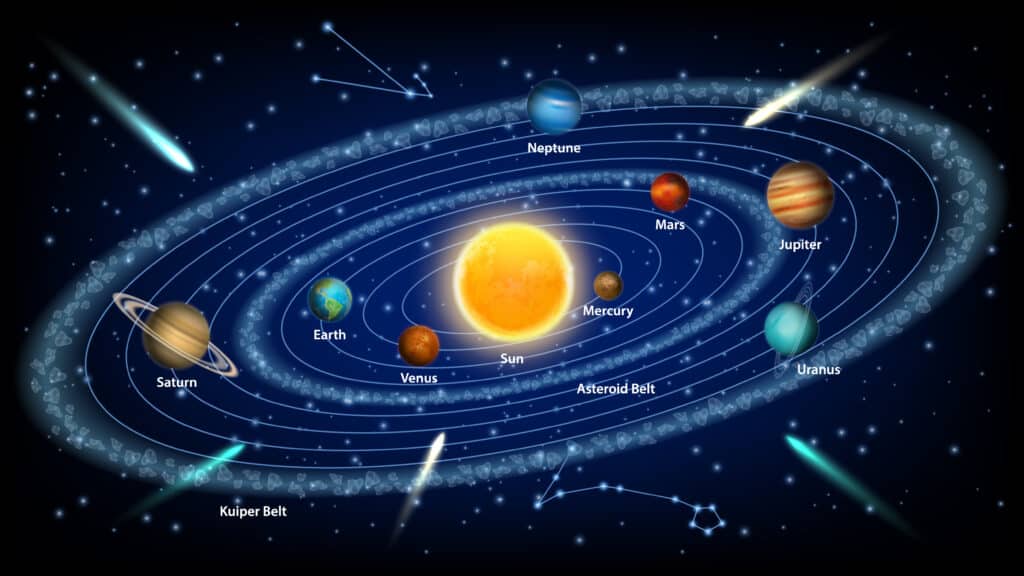
Light from the Sun takes about 555 days to reach the edge of the Solar System compared to 8.25 minutes to reach the Earth. It's clear we're talking about IMMENSE distances which can be hard to imagine.
Astronomical units can be used to make the distances more manageable.
Working out how far each planet is from the Sun can be tricky as the distance changes depending on where the planet in its orbit. I've used average distances for this activity.
What is an Astronomical Unit?
An astronomical unit ( AU ) is the distance from the Earth to the Sun ( about 93 million miles )
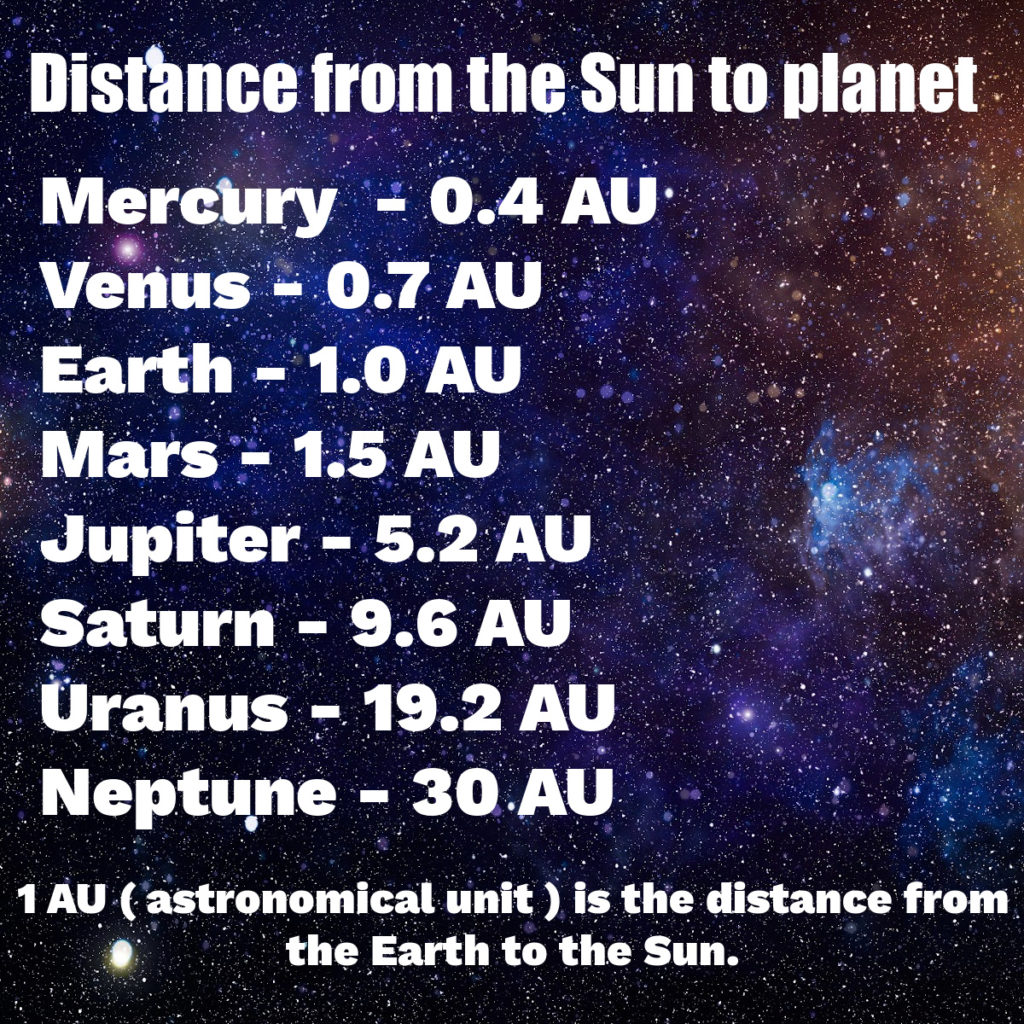
Draw the Solar System
An easy way to draw the Solar System is to scale a drawing to 1AU = 1cm and draw each planet starting from the Sun at 0cm.
Walk the Solar System
To walk the solar system, you'll need to convert the Astronomical Units to something walkable.
If you multiply each distance from the Sun by 100cm, you can easily walk and mark out the Solar System, although you will need a big open space.
For example:
Start with the Sun at 0 cm.
Mercury 40 cm
Venus 70 cm
Earth 100 cm
Mars 150 cm
Neptune 30 metres
Another idea is to use toilet paper and roll out a separate strip for each planet along the ground.
Remember 1 AU is 93 MILLION MILES!!! To put this into context the diameter of the Earth is only 7926 miles!!!
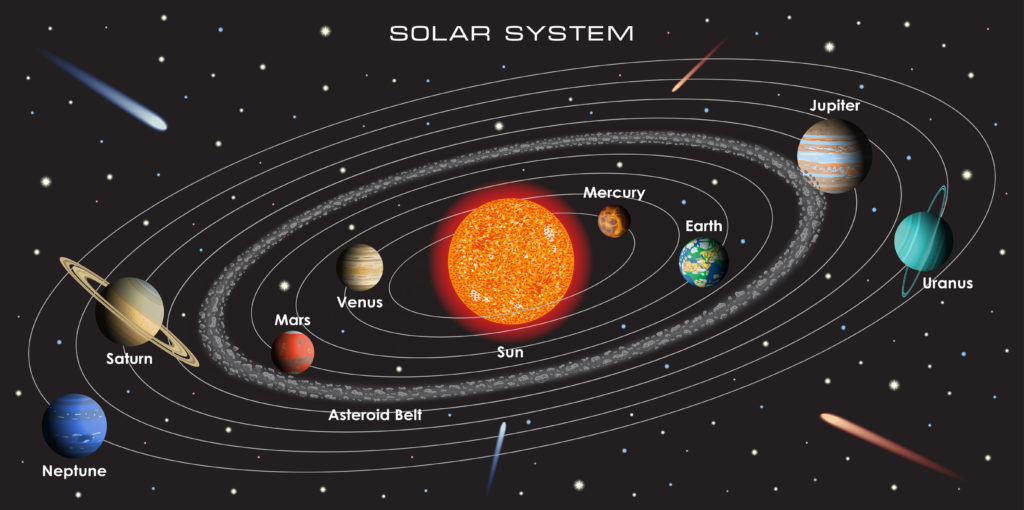
Grab the activity sheet below!
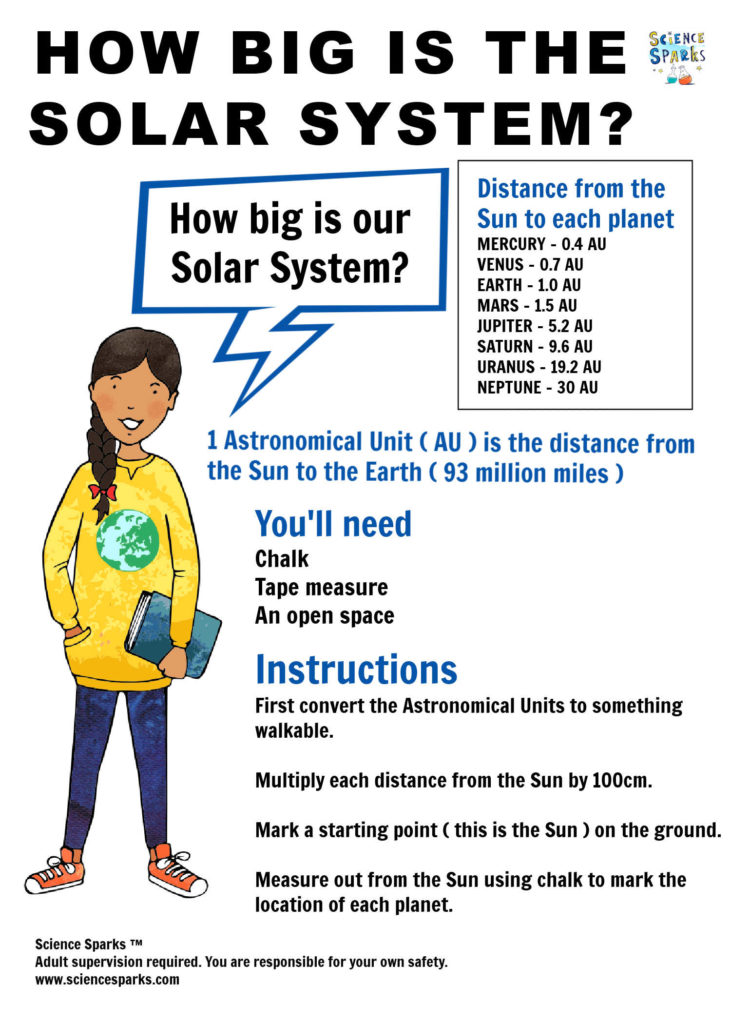
Crazy space facts
Did you know 1.3 MILLION Earths would fit inside the Sun?
1320 Earths would fit inside Jupiter ( if there was no space between them ) which is the biggest planet in the Solar System.
Our solar system is part of a galaxy called the Milky Way!
There is a giant black hole at the centre of the Milky Way that weighs more than a billion Suns!
ELEVEN Earths would fit across the diameter of Jupiter.
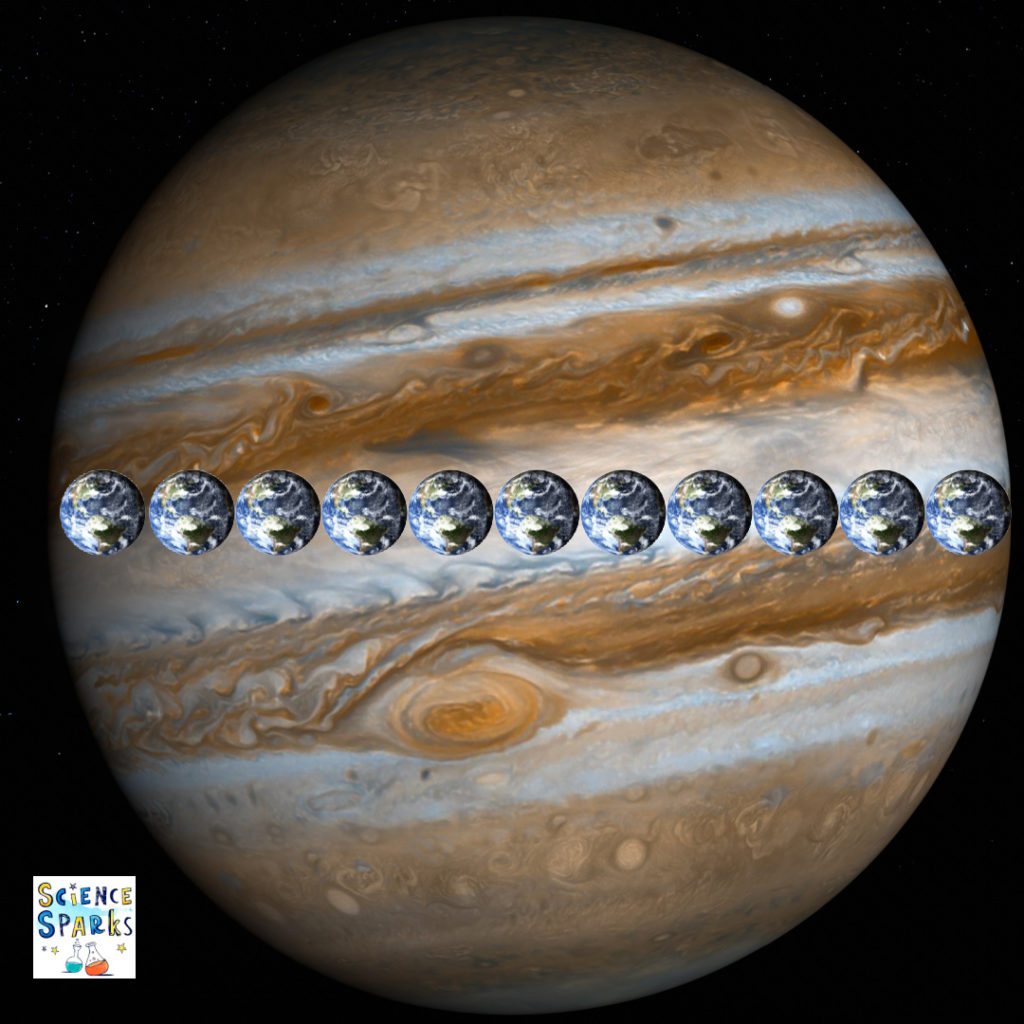
Mercury spins so slowly that a year is longer than a day!
Mercury has a very thin atmosphere.
Venus is the hottest planet in the solar system, and its air is so thick that it would crush human visitors in seconds.
Olympus Mons on Mars is three times taller than Mount Everest!
IO ( one of Jupiter's moons ) has over 400 active volcanoes.
Saturn has over 60 moons!
Uranus rolls on its side rather than spinning upright like the other planets.
It would take a plane travelling at normal speed over 570 years to get to Neptune!
Saturn is the second biggest planet, but not very dense. If you could make a bathtub big enough, it would float!
Jupiter has 67 moons ( that we know of ).
If you compare our sun to other stars, it's actually quite small. Hypergiant star VY Canis Majoris is 1400 times wider than the Sun!!!
More space science
Find out more about the wonders of space with one of my easy space themed science experiments!
This video illustrates the size of space brilliantly!
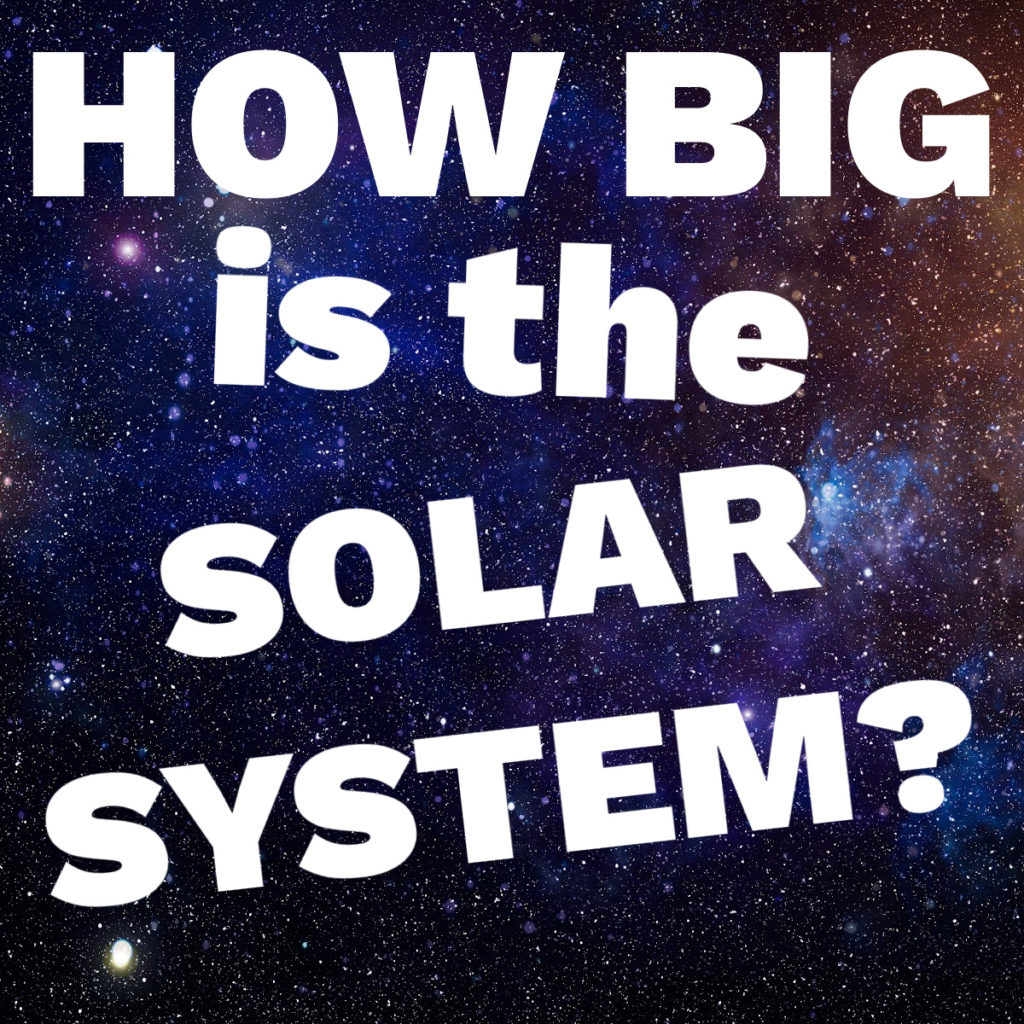
Last Updated on April 1, 2025 by Emma Vanstone
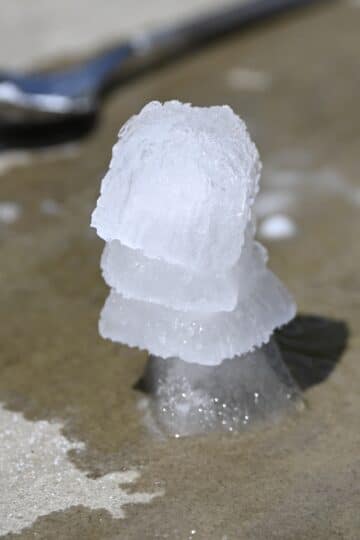
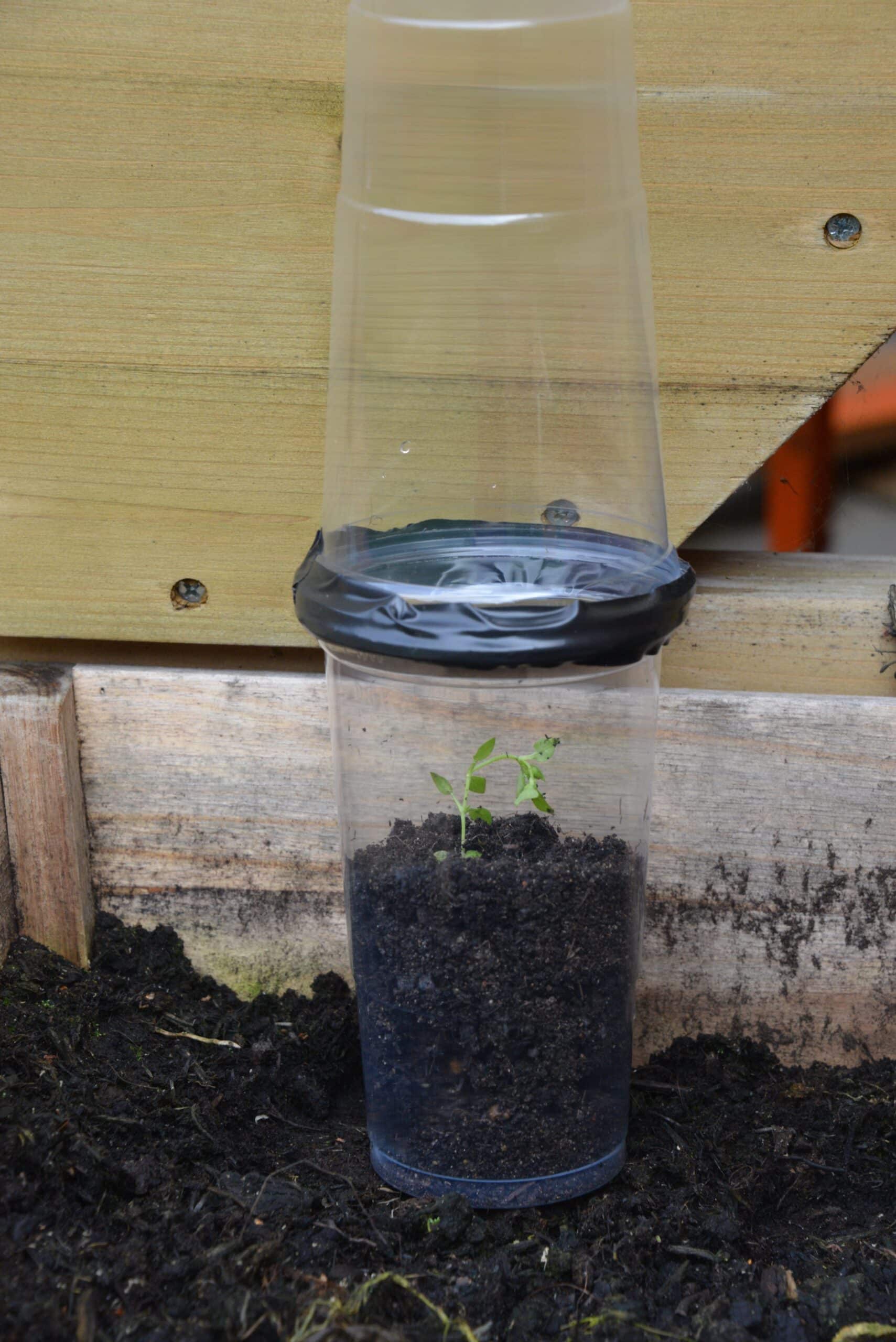
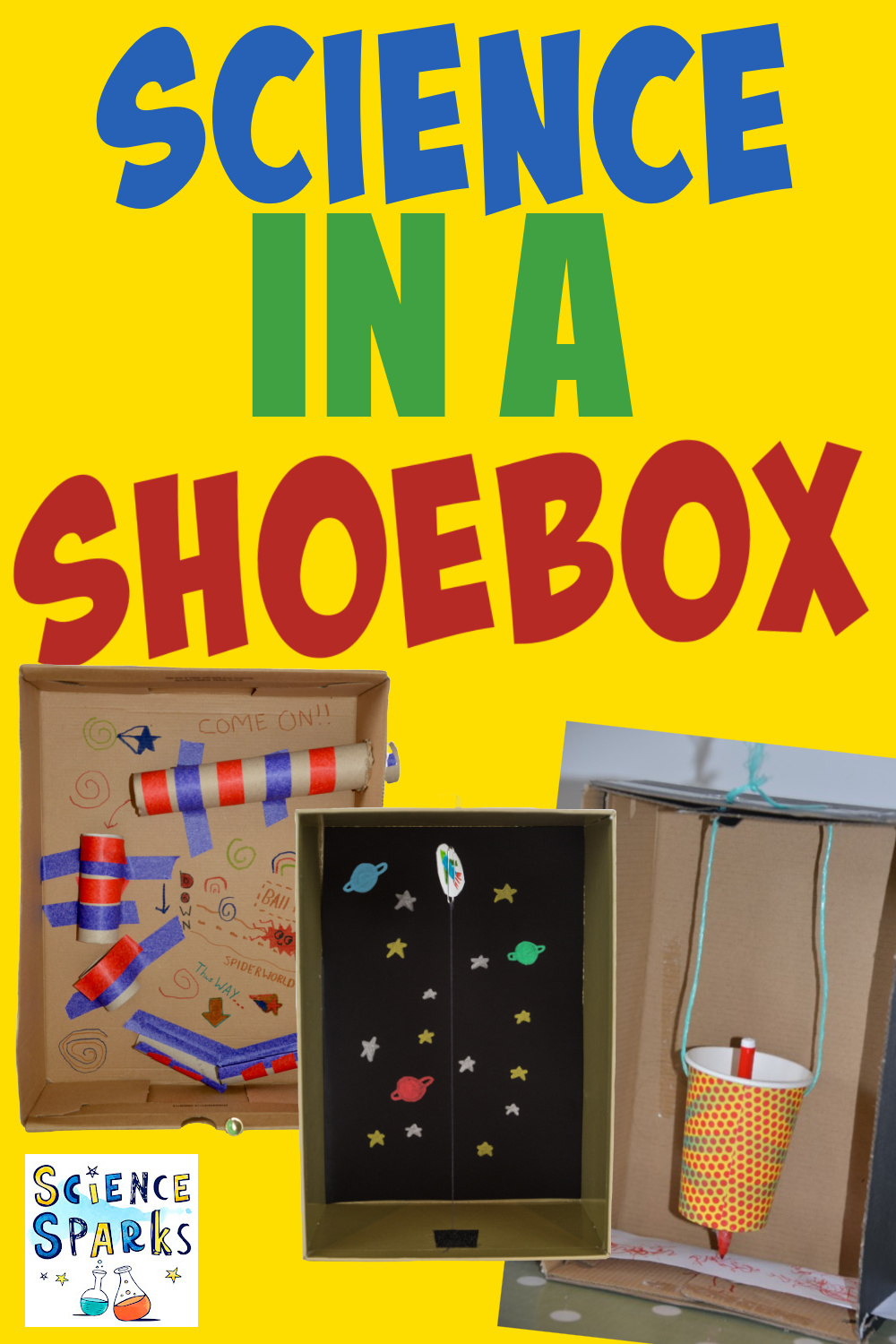
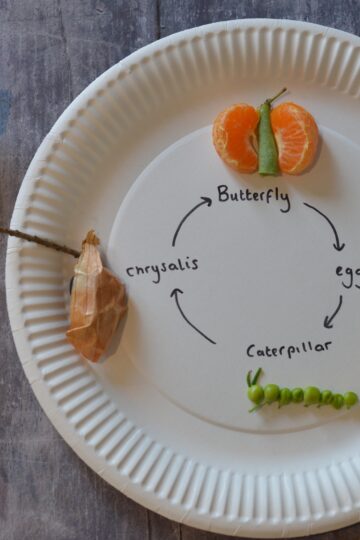
Leave a Reply